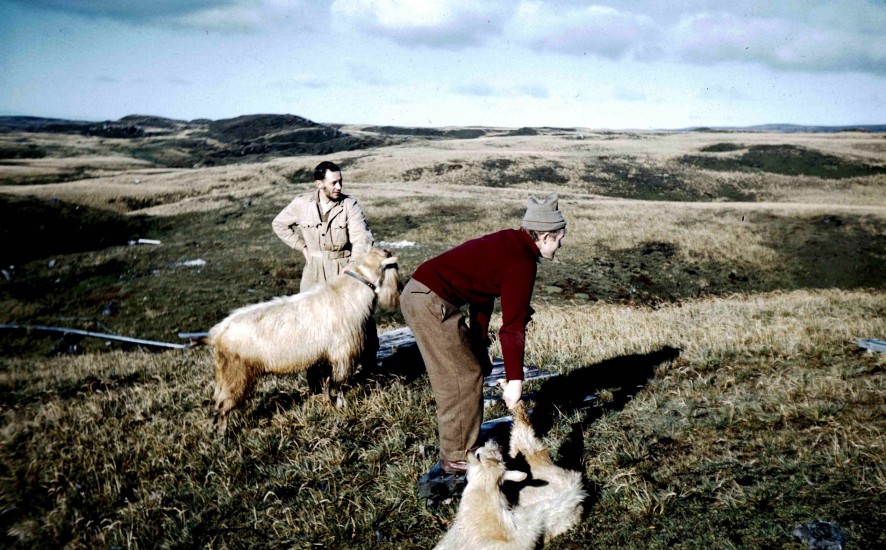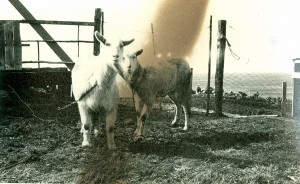Current and recent team members at Marion may well know that in the past domestic sheep were sent to the island as a source of fresh meat in the days before deep freezes. The first sheep (five Merinos in lamb) were sent in 1948 and the last batch went south in 1969. The last sheep seen alive – at Piew Crags – was in April 1973. Sheep bones can be seen to the present day on the lower slopes of Karoo Kop and near Mesrug, and I saw a skull at the erstwhile Laekop Hut in the 1980s, showing how far some of them had wandered from the Base at Transvaal Cove. Less well known is that domestic goats were also sent to Marion Island.
The exact year of introduction of goats to Marion is as yet unknown to the Antarctic Legacy of South Africa, nor is it known how many introductions were made and of how many animals. The earliest definite record to hand is of two animals photographed by Olof A. van Zyl, Meteorologist with the Fifteenth Overwintering team (MI5) over April 1958 to March 1959. The last, and only other definite record, is of a photo, again of two goats, by Christo Wolfaardt, Meteorologist with M18 from April 1961 to March 1962. ALSA’s caption to this photograph states the goats were taken south to provide fresh milk, so his picture might well be of a nanny and its kid. Goat milk would have been an interesting change from the ‘Sterovita” sterilized milk in glass bottles that was the usual source in the early years of Marion’s occupation.
Tethered and penned goats (a nanny and its kid?) at Marion Island, photograph by Christo Wolfaardt
In a 1961 article Hannes La Grange of the then South African Weather Bureau wrote “A few years ago goats were introduced to the island and due to the damages to the buildings they were chased away. The present relief party [assumed to be M18] has found the meat a real delicacy.” La Grange also remarked that the goats had become feral and spread to the western side of the island, their hooves becoming long and flat, presumably due to lack of wear in the wet terrestrial habitat.
Christo Wolfaardt’s Team Leader, Piet A. Le Roux in a personal communication published in 1985 stated that the goats “were slaughtered in 1961 with the exception of one individual which managed to escape”. This suggests to me that there were more than two individuals present on the island at the time.
Skull collected in April 1991 at Piew Crags
The skull depicted above was given to me by Deon Muller (M47 Cat Hunter) who collected it at Piew Crags in April 1991. It is now in the Social History Collections Department of the Iziko Museums of South Africa, along with its lower jaw. None of the sheep or goats in photos in the ALSA collection has visible horns, as the skull does. So is it from a sheep or a goat? A positive ID is underway.
It seems likely that a small number of milch goats was taken to Marion in or around 1959 and by 1961 they had either run away or been eaten. To learn more ALSA needs to trace the elusive annual reports of Team Leaders in government archives, assuming such still exist from Marion’s early days.
Featured photograph: Two goats at Marion Island, photograph by Olof van Zyl
References:
La Grange, J.J. 1961. News from Antarctica and the island stations. Marion Island. South African Weather Bureau Newsletter 151: 166.
Watkins, B.P. & Cooper, J. 1986. Introduction, present status and control of alien species at the Prince Edward Islands. South African Journal of Antarctic Research 16: 86-94.
John Cooper, Antarctic Legacy of South Africa, Department of Botany and Zoology, Stellenbosch University, 27 February 2016



